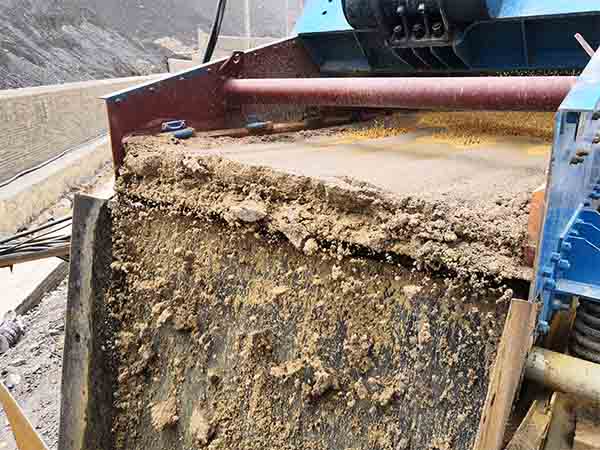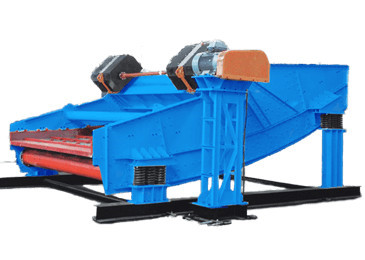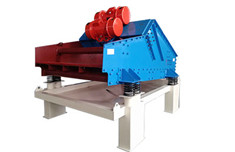The sand washing dewatering screen is widely used in industries such as sand and gravel dehydration, concentrate dehydration, dry tailings, smelting slurry concentration, chip removal, and carbon slurry separation. The sand washing dewatering screens have sufficient dewatering, large processing capacity, high screening efficiency, significant technical and economic effects, wide application range, reasonable structure, sturdy and durable, convenient assembly, low noise, easy maintenance and other features. Dewatering screen is the highlight and important guarantee for concentrate dewatering and tailings dry discharge.

Structure
Sand washing dewatering screen consists of vibration motor, polyurethane screen panel, screen frame, vacuum high-pressure pump, sediment separator, cleaning tank, and return box. The dewatering screen is mainly to separate the moisture in the wet material. Polyurethane plate dewatering screen is often used for river sand and wet soil. After the water in the river sand or wet soil is screened and dried, the sand or soil becomes solid and can be used.
How sand washing dewatering screen works?
1. The dewatering screen is different from the general belt coupling drive mode. It adopts vibrating motor and the movement track is more stable and reliable.
2. When two motors make synchronous reverse rotation, the vibration force generated by the eccentric block is offset in the direction of the parallel motor axis, and overlapped into a force in the direction of the vertical motor axis, so the motion trajectory of the screen machine is a straight line.
3. The two shafts have an inclination angle in the vertical direction relative to the screen surface. Under the combined action of the vibration force and the self-gravity of the material, the material on the screen surface moves forward along a continuous jump. In the process of encountering the screen surface, the materials and water smaller than the screen hole are allowed to penetrate the screen surface to achieve dehydration, desliming and classification.
Related Products
Send us a message
We will provide you with the most professional services.



